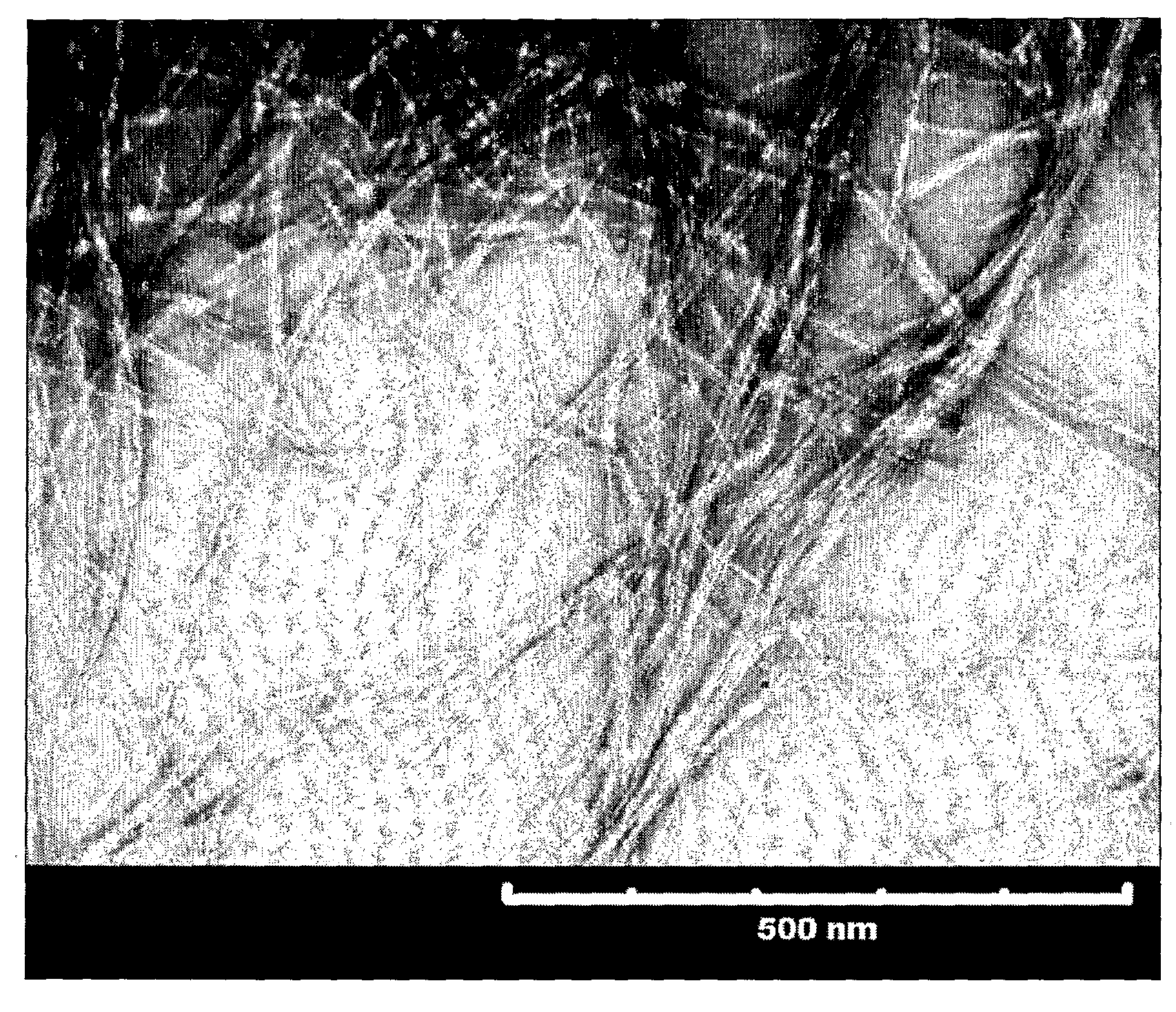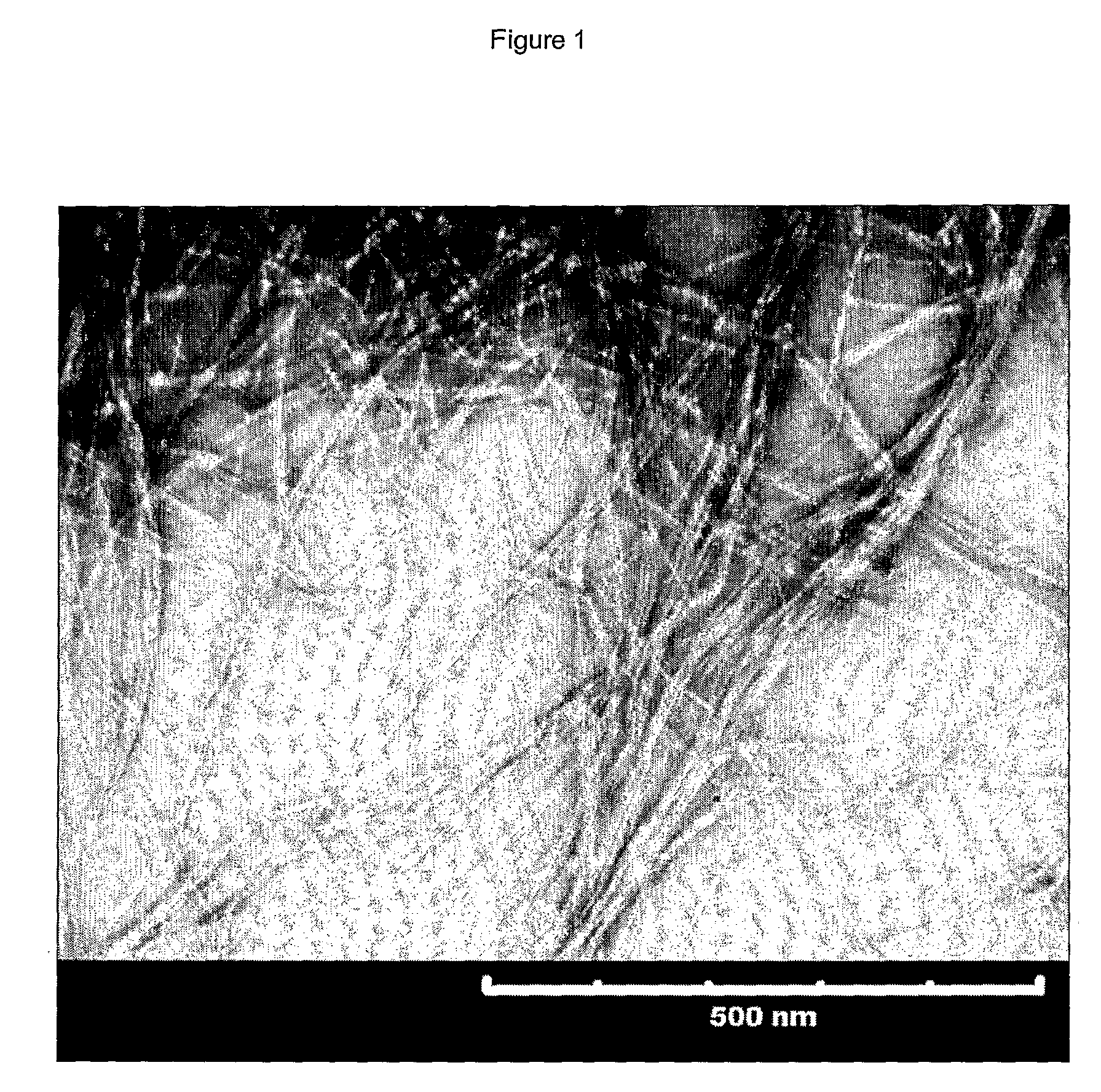Method for the manufacture of microfibrillated cellulose
- Summary
- Abstract
- Description
- Claims
- Application Information
AI Technical Summary
Benefits of technology
Problems solved by technology
Method used
Image
Examples
example 1
Treatment of Sulphite Pulp with Enzyme and Refining Said Pulp
[0023]The cell wall delamination was carried out by treating the sulphite pulp in four separate steps.[0024]1. A 4% w / w cellulose suspension (ECO Bright, from Domsjö Fabriker AB) was mechanically refined using an Escher-Wyss refiner (Angle Refiner R1L, Escher-Wyss) with 33 kWh / tonne at a specific edge load of 2 Ws / m to 28 °SR. The pulp was a softwood pulp from a mixture of Norwegian Spruce and Scottish Pine (respectively 60% / 40%). The pulp had been TCF-bleached in a closed loop bleach plant.[0025]2. Four different amounts of monocomponent endoglucanase were added (Cases A, B, C and D) (Novozym 476, a cellulase preparation, from Novozymes A / S). In Case A no enzyme was added (0 ECU / g fibres). In case B, C and D, 100 grams (calculated as dry fibres) of refined pulp was dispersed in 2.5 litres of phosphate buffer (pH 7, final pulp concentration 4% w / w) with different amounts of enzymes (Case B=0.65 ECU / g fibres, Case C=0.85 EC...
PUM
| Property | Measurement | Unit |
|---|---|---|
| Concentration | aaaaa | aaaaa |
| Electrical resistance | aaaaa | aaaaa |
Abstract
Description
Claims
Application Information
 Login to View More
Login to View More - R&D
- Intellectual Property
- Life Sciences
- Materials
- Tech Scout
- Unparalleled Data Quality
- Higher Quality Content
- 60% Fewer Hallucinations
Browse by: Latest US Patents, China's latest patents, Technical Efficacy Thesaurus, Application Domain, Technology Topic, Popular Technical Reports.
© 2025 PatSnap. All rights reserved.Legal|Privacy policy|Modern Slavery Act Transparency Statement|Sitemap|About US| Contact US: help@patsnap.com


